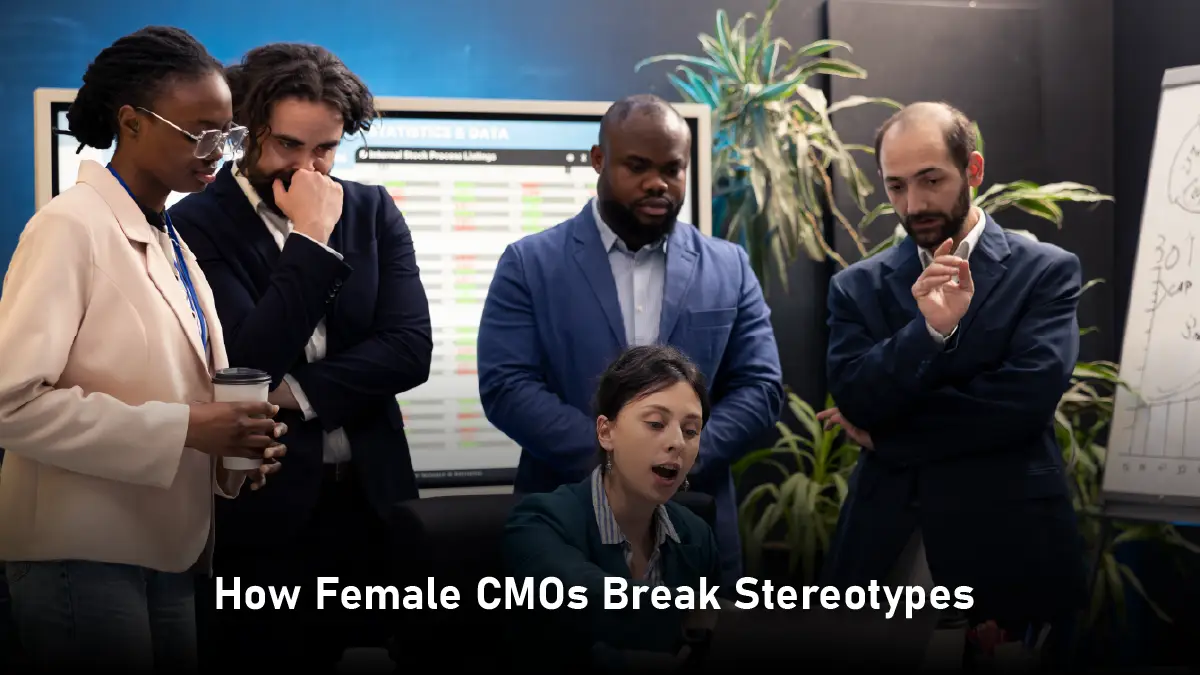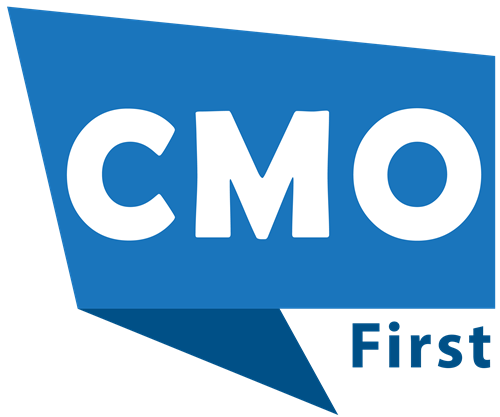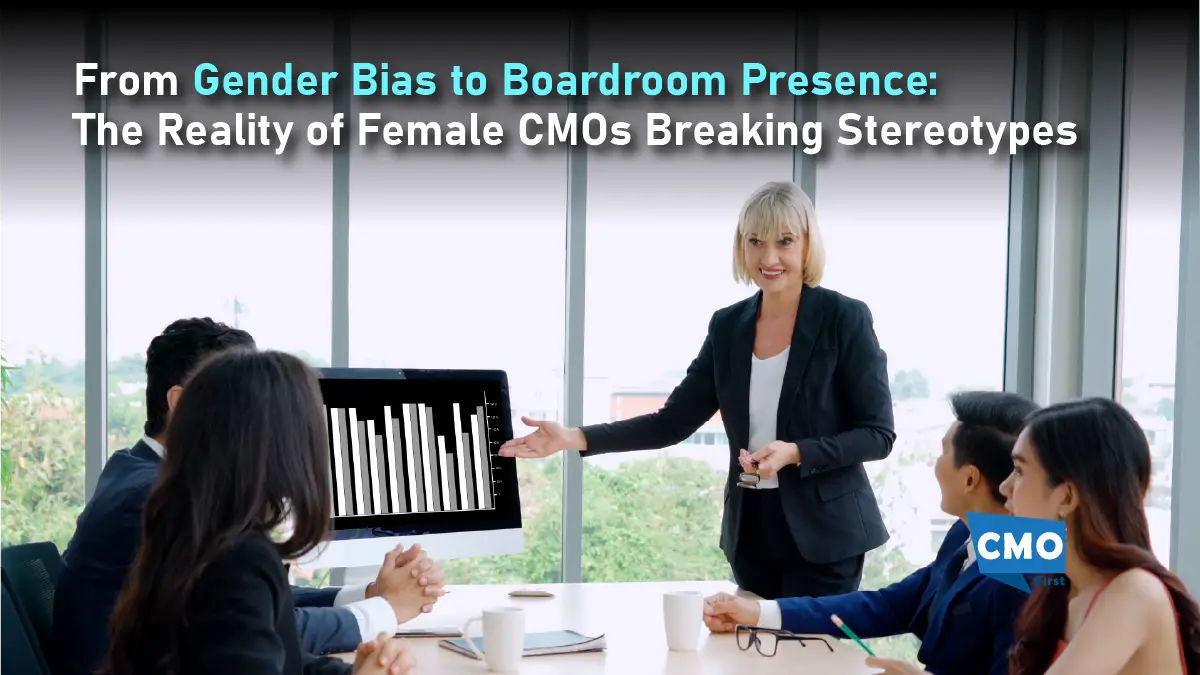Female Chief Marketing Officers (CMOs), who are redefining leadership and bringing about changes in company culture, strategy, and industry perception, made waves in the marketing world in recent years. Today’s female marketing leaders are changing the perception of women in leadership roles and achieving success via empathy, data-driven insights, and inclusive thinking. Let’s examine this shift in more detail.
Shifting Gender Roles in Marketing
The ascent of women to the top levels of marketing is measurable and significant. Nearly half (48%) of new CMO appointments were women in 2019, the highest rate recorded at the time. This percentage has been increasing ever since. In fact, recent years have seen periods where the number of women assuming CMO roles outpaced that of men. As of 2025, women hold 53% of CMO positions. This marks a historic milestone for gender parity in the marketing domain. This momentum is not just about numbers. It signals a shift in mindset and breaks the entrenched bias that often limited women’s paths to leadership.
The strategic value that women contribute to these roles is shown in the expanding function of CMOs, which now encompasses more duties including revenue growth and customer experience. In addition, women continue to dominate CMO appointments. In 2024, they will make up more than 58% of hiring in sectors like retail and healthcare. Racial and ethnic diversity at the top marketing levels still exist; despite advancements in gender representation. There is room for development. All things considered, the increase in female leadership positions women as key players in determining business strategy and culture, redefining the marketing industry.
Persistent Stereotypes
Notable advancements have been made in the representation of women at the top of marketing leadership. However, some stereotypes still influence how female CMOs are viewed and lead. Such stereotypes often cast women into limited roles or judge their leadership qualities differently than men. This creates several barriers that female leaders must actively overcome. We can understand the difficulties faced by female CMOs and how they overcome them if we are aware of these stereotypes.
Creativity Over Strategy

Women in marketing were always seen as creative contributors than strategic executives. This bias ignores women’s skills in data analysis, finance and business growth. It implies that they are only good at communication and campaign design. Female CMOs are disproving this by showing they are good at analytics, consumer insights, and revenue generation. They are proving that strategic thinking and creativity are required for marketing leadership.
Also Read: From Siloed to Synced: Solving Data Fragmentation Across Your B2B Marketing Stack
Gendered Language
Using gendered language minimizes the achievements of female CMOs while highlighting their nurturing qualities. Women leaders are often described as ‘supportive’ or ’empathetic’ rather than ‘decisive’ or ‘innovative’. Stereotypes about women being less authoritative may be reinforced by this. By being confident and showing off their diverse leadership skills, female CMOs are trying to change this.
Higher Scrutiny
Research indicates that female CMOs make more careful decisions. They do this because they are held to a higher standard and get penalised more harshly for mistakes than their male peers. They take fewer risks but they do so thoughtfully. It’s interesting to note that when female CEOs or inclusive settings support them, female CMOs take more chances. This implies that less bias can result in even more audacious leadership.
Fighting Stereotypes in Advertising
The marketing industry has been criticized for showcasing stereotypes in ads. Historically, women have been portrayed in domestic or passive roles rather than as leaders or professionals. They have been shown in limited roles, like doing chores. Female CMOs are pushing for ads that show real, strong, and diverse women to change how society sees women.
Pressure to Balance Warmth and Authority
Female leaders often face the dilemma of being warm and approachable, yet strong and decisive. This balance is hardly expected of their male counterparts. This creates additional pressures in how they communicate and assert influence. Through conscious leadership style and communication training, female CMOs are redefining these norms and proving that leadership can harmonise empathy with authority.
In many ways, female CMOs are challenging and changing these assumptions. Their work shows that women can lead with confidence and success when businesses support them and create an equal culture. And inclusive cultures, supportive environments, and changing attitudes help women reach their best in marketing leadership.
How Female CMOs Break Stereotypes

In the past, women in marketing were frequently categorized into positions that were associated with communication and innovation. Today’s female CMOs are busting that myth. They are using a multifaceted leadership style that combines social responsibility, innovation, and analytics. Female CMOs are using performance marketing, AI, and advanced analytics to deliver business outcomes not just be creative visionaries. They can build real and lasting relationships with their customers because of their high emotional intelligence. Diversity and inclusion are also key focus areas for female marketing leaders. Both within their own companies and when reaching out to audiences they are using inclusive marketing.
How do they break stereotypes and get work done?
· Leading Data-driven Change
Female CMOs use data analytics and AI-driven insights to improve performance and hone marketing strategies. Making data-backed strategies helps them manage budgets, detect new trends, and customize consumer experiences more effectively. By relying on facts and numbers, they move marketing beyond just creative ideas to measurable results. By showcasing women as strategic innovators, this analytical leadership challenges the antiquated notions of marketing as solely creative.
· Building Strong Connections
Emotional intelligence is a defining trait of successful female CMOs. This enables them to build sincere and significant connections with clients. This also leads to authentic storytelling and brand narratives that resonate with diverse audiences. Female CMOs encourage collaborations to create inclusive workplaces where ideas flourish and teams are motivated. They contribute to more creative and upbeat work environments. In a market that is becoming more and more competitive, a focus on true connection leads to long-term customer connections and strong brand loyalty.
· Promoting Diversity and Inclusion
Female CMOs work hard to include different voices and perspectives in their teams. This helps them lead innovative market campaigns. Companies are, thus, able to reach and relate to more people. They can cater to different customer segments. Creating an inclusive culture also attracts talented employees from diverse backgrounds and improves employee engagement.
· Focus on Social Responsibility
Women in marketing tie their brand’s message to social causes. They run campaigns that promote sustainability and equity. This builds trust and shows the brand cares about more than profit. Purpose-driven marketing makes brands stand out today and makes a real difference to the society.
· Leadership Challenges with Resilience
Gender bias, high expectations and increased scrutiny are some of the challenges female CMOs face. They deal with this by being resilient and finding ways to support other women through mentoring. Female CMOs create mentorship and support systems. Their bravery and tenacity opens the door for future female leaders. This aids in advancing their own careers and promoting equal representation.
Real-life Examples of Female CMOs Breaking Stereotypes
Female CMOs around the world are smashing stereotypes in marketing leadership.
Maggie Chan Jones, Former CMO of SAP
Maggie Chan Jones busted the myth that women in marketing are only creative by being a tech-driven marketing leader. With a background in data analytics and cloud services at Microsoft, she was the first female CMO at SAP and led a global team of 1,300 marketers. She combined data, technology, and innovative thinking to drive business growth. She proves women bring analytical rigour and strategic thinking to the CMO role, beyond creative leadership.
Alma Derricks, CMO at El Rey Network
Alma Derricks smashed the myth that women are risk averse and not entrepreneurial by taking an ‘intrapreneurial’ approach within big media companies. She worked with brands like HBO and Cirque du Soleil and always pushed for new ideas to expand brand reach and innovation. Alma’s ability to get buy-in for crazy projects shows how women leaders use creativity and strategic risk to redefine marketing in tough industries.
Ann Lewnes, EVP & CMO of Adobe
Ann Lewnes is proof that women can lead in tech or data-heavy marketing environments. She started in tech companies like Intel and rose up through the ranks by being data-driven and digital. At Adobe, she led campaigns that combined emotional storytelling with AI-backed insights. Her leadership proves marketing isn’t just about creativity with no data and technology.
These women show female CMOs are not only creative but strategic, data-savvy, and bold. Leading with innovation, empathy, and technology, they break the old gender roles and show leadership is about ability and vision not gender.
In Conclusion
Female CMOs are transforming the entire corporate ‘boardroom’ in addition to shattering the glass ceiling. They are improving marketing and upending the status quo in a variety of sectors and societies through empathy, analytics, and inclusion. Their presence in the boardroom is more than just symbolic. It is a driving force behind creativity, resiliency, and more globally relevant brands.























Leave a Reply